#gallery wendi norris
Text

Miguel Angel Ríos, in collaboration with Rafael Ortega, A Morir ('til Death), (video, 4:53 min; still), 2003, project developed and filmed in Tepoztlán [Capture Photography Festival, Vancouver. © Miguel Angel Ríos.Courtesy of Gallery Wendi Norris, San Francisco, CA]
#art#video#still#play#game#geometry#miguel angel ríos#rafael ortega#capture photography festival#gallery wendi norris#2000s
24 notes
·
View notes
Photo

Alice Rahon - El tucán y el arco iris, 1967
14 notes
·
View notes
Text

Leonora Carrington (British-born Mexican artist) 1917 - 2011
And Then We Saw the Daughter of the Minotaur, 1953
oil on canvas, 59.9 x 69.9 cm. (23.6 x 27.5 in.)
Gallery Wendi Norris, New York, United States of America © photo Gallery Wendi Norris © Estate of Leonora Carrington/Artists Rights Society (ARS), New York
98 notes
·
View notes
Text
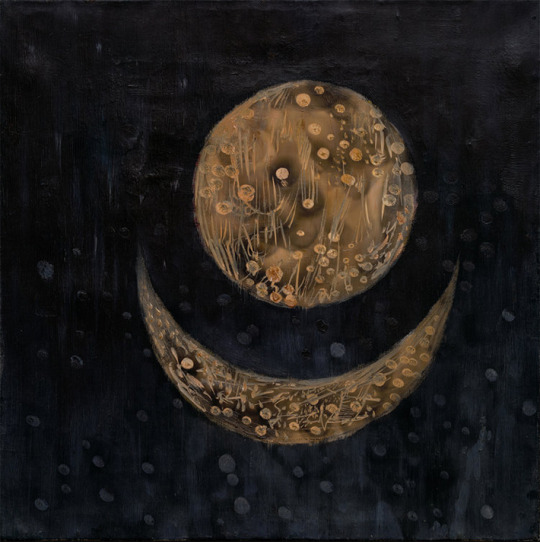
Wolfgang Paalen, Untitled, 1940.
Oil and fumage on canvas.
Paalen was an Austrian artist who fled war-torn Europe in 1939 and arrived in Mexico at Frida Kahlo and Diego Rivera’s invitation. Paalen made Mexico his home for several years until he moved to California with his new wife. Two years later, the divorced artist returned to Mexico and remained there until his death.
Image courtesy of: Gallery Wendi Norris
215 notes
·
View notes
Photo

Ambreen Butt | Say My Name — Gallery Wendi Norris | San Francisco
51 notes
·
View notes
Text

Leonora Carrington, Down Below, 1940. © 2019 Estate of Leonora Carrington / Artists Rights Society (ARS), New York. Courtesy of Gallery Wendi Norris.
3 notes
·
View notes
Text
Curator Spotlight: Natasha Boas

We’re ringing in the new year with a firecracker: one of our most hilarious, crazy features ever, an interview with Natasha Boas, whose sparkling wit is matched only by her taste in literature and chairs. You’ll have to read below to understand, but we’ll say now that this is a woman who was once Jacques Derrida's student and sat on his kitchen chairs in his apartment in Paris. A conversation with Boas, an independent scholar and curator (and thinker), had us traipsing all over the noosphere and our own backyard in San Francisco, where she became our tour guide to the hidden currents of a city we thought we knew well.
Studio AHEAD: In your home you have several towers of precariously stacked books. We’re going to name a few and would like you tell us the perfect chair/sofa/magic carpet on which to read them:
La honte (Annie Ernaux)
Natasha Boas: I have always been a huge fan of Ernaux’s and have read everything she has written in French, and then in 2022 she received the Nobel Prize in Literature so her novels are finally more available in English. La honte is about the shame a young woman experiences about her childhood and the woman she becomes. It’s autofiction, one of my favorite genres. I think I would suggest reading La honte on any Madame Récamier daybed—perhaps specifically on my antique nineteenth-century French iron folding bed. I grew up with it as my childhood bed and it has tiny wheels—when we once had an earthquake in San Francisco in the 1970s, I remember waking up having rolled across by bedroom from the garden corner to my fireplace.
SA: Specters of Marx (Jacques Derrida)
NB: For Derrida, the spirit or “ghost” of Marx was even more relevant after the fall of the Berlin Wall in 1989. This essay was the plenary address of "Whither Marxism?," a conference on the future of Marxism held at the University of California, Riverside in 1993. Derrida was my professor in Paris and a very modest man who would have wanted us to read his book on a simple kitchen chair—perhaps a Charlotte Perriand Bausch chair from the 50s that came secondhand with his humble apartment—where the caning is damaged and used and it is broken and somewhat imbalanced.
SA: Three Essays on the Theory of Sexuality (Sigmund Freud)
NB: This book contains the iconic essay in which Freud reveals his famous Oedipal theory among other things. It should be read in your mother’s lap—haha! No, it should be read on Freud’s divan couch of course! It may be the most famous couch in history and can be admired in Freud’s study in London at The Freud Museum at 20 Maresfield Gardens in the Hampstead neighborhood. The term “on the couch” became the euphemism for what psychiatrists do because of this very couch shaped like a chaise long with a Persian rug laid over it. Of course, I contributed to a fundraiser launched in 2013 to help reupholster the legendary couch. It seemed very important to me at the time.
SA: Leonora Carrington: The Story of the Last Egg (Leonora Carrington)
NB: This book is the accompanying catalogue to Gallery Wendi Norris’s 2019 exhibition of the same name in New York City. In addition to the show, the gallery hosted a two-day symposium on Carrington. It began with a dramatic reading of Leonora's play, titled Opus Siniestrus: The Story of the Last Egg, which in many ways predicts the dystopian situation of women’s reproductive rights today. My talk “The Leonora Carrington Effect: What We Can Learn from Leonora Carrington Today” became an essay for the book.
These ideas on the relevance of Carrington today resonated a year later at the Venice Biennale “Milk of Dreams” with its focus on Carrington and other historic Surrealist women artists. I wrote my dissertation years ago on this seminal modernist movement in art, which continues to influence my work. Currently, I have curated the exhibition on the post-Surrealist Gertrud Parker: The Possible at Marin MOCA, which includes Leonora Carrington, Leonor Fini, Alice Rahon and other influential Surrealist women. It is up through March 31 and I highly recommend a visit. It also features the famous Dynaton artists Luchita Hurtado, Wolfgang Paalen, and Gordon Onslow Ford, who convened in Inverness in west Marin County last century.
I think I would read The Story of the Egg on the bed that the Surrealist artist Max Ernst made for his wife, the artist Dorothea Tanning. It is said that she hated the bed and hid it out of view in the basement of their Provence house, but it is currently being shown on the top floor at a small regional Max Ernst museum in Seillans, near my family house in the Var, Cote d’Azur region. It’s a bizarre six-post structure with a mirror, green metal leaves, a faux brown fur bedspread and several circular paintings attached to it—but seems like the perfect bed for lounging on to read this provocative book.
SA: You are an expert on countercultures and in particular the Mission School. Is there anything you have learned from them—whether related to art or not—that you apply to how you interact, live in, go about San Francisco? This is of course a movement whose members reimagined what was around them.
NB: Yes, I have always been drawn to countercultures, alternative art movements, and under-recognized artists. What drew me to the Mission School artists was that it was an “affective” community—one based on shared sensitivities, a shared neighborhood, and friendships. Graffiti, studio painting and the San Francisco Art Institute were touch points for the group. In many ways I see this group of artists as a continuation of another SFAI group, the Rat Bastards Protective Association with Jay deFeo, Bruce and Jean Conner, Manuel Neri, and others. In fact, Ruby Neri, Manuel’s daughter, who was raised in Inverness and educated at SFAI, literally connects the two movements. I learned that there can be a correlation between street art and studio practice through her, Barry McGee, Alicia McCarthy, Chris Johanson, and Margaret Kilgallen.
These artists were not precious, they used simple materials often culled from garbage found in the city and they always included their friends’ work in their exhibitions, and they still do. That is very much the “Bay Way” of making art. It has influenced my way of curating too. I am not afraid of the heteroclitic or telling new stories. I just curated a show this fall: “Old Friends/New Friends” at Creativity Explored, which is a studio that supports neurodiverse artists or what we used to refer to in art history as “outsider artists” and the expanded Mission school artist community.
I grew up in SF in the 1970s. I even lived at the now defunct radical artist colony The Farm founded by the conceptual artist Bonnie Ora Sherk under what was then Army Street overpass and now Cesar Chavez. I worked at the Café Trieste in North Beach as a barista and served the likes of Allen Ginsburg. I read my poetry at City Lights Book Store and saw the Dead Kennedys perform at The Mabuhay Gardens. We were around when Harvey Milk was assassinated and when SFMOMA was on the fourth floor of the War Memorial Veterans building on Van Ness Avenue. This group of Mission School artists are my generation. We vibe on the same San Francisco history.
SA: I am curious as to what happens in your curation when you bring institutional outsiders inside the institution. Perhaps nothing happens. Perhaps it changes everything. Perhaps it ruins everything.
NB: In my experience—magic happens. But I have always taken risks—like bringing a trailer, which I bought with the Indigenous artist Brad Kahlhamer at an Arizona swap meet for a hundred dollars, into a museum gallery to create a nomadic studio space. We had to fumigate the trailer to make it museum compliant and we built out a proscenium so we could also use it as a stage for local Native performances. The exhibition was appropriately entitled SWAP MEET and played on all the valences of cultural exchange.
SA: You speak so much about San Francisco’s history, and so much has changed, that I wonder if counterculture is still possible in this city?
NB: Yes—it is always possible especially in our city with its cyclical history of boom and bust! There is always some kind of counterculture operating. We just need to ask “which culture is counterculture countering?” and then we can identify it. And we should always be brave enough to counter culture through the sub, the underground, the transversal. I just participated in a show at the Palais de Tokyo in Paris called The Termite Bites and it looked at artists who are practicing—literally and figuratively—below ground.
SA: We always ask the person interviewed how they came to California. We’ll pose this question to you with a twist. How did you come to California? And can you trace the history of how one piece of artwork that you own came into your possession here in California?
NB: My family came to SF from France in the late 1960s as part of a larger movement of young people seeking alternative lifestyles and new ideas—I was raised in a vibrant multicultural city and went to a French lycée and roamed freely around town on Muni. Later, I moved east for college and then lived and worked as a curator and professor in New York and Paris for over 20 years, when I returned back to the Bay to raise my family.
Most of my collection is from artists I have worked closely with over the years in all three places—either gifted or swapped. I am particularly attached to an Etel Adnan (1925-2021) Mount Tamalpais artwork I have from my time working with her in Paris. Adnan—who was born in Beirut, Lebanon, died in Paris, and lived an important part of her life with her life companion, the artist Simone Fattal in Sausalito—is a transnational link for me between my two homes and two cultures—in her case three cultures. Her poems and drawings in the book Journey to Mount Tamalpais speak to me the most; it has been re-edited recently by my friend Omar Berrada.
SA: Lastly, in the spirit of Guy Debord and the Situationists, if you were doing a dérive-style walk around San Francisco, where might it take you?
NB: My dérive would always lead me back to the Lyon street steps at Broadway. My friend Marc Zegans just published a book of poems about this important passage way in the city. Our SF was more of a village, pre-tech booms. I grew up and went to high school in Presidio Heights. It was very sleepy. We lived on those steps as teens, overlooking the bridge. We had our first kisses there, smoked our first joints, played the guitar, the city was ours.
Photos by Ekaterina Izmestieva
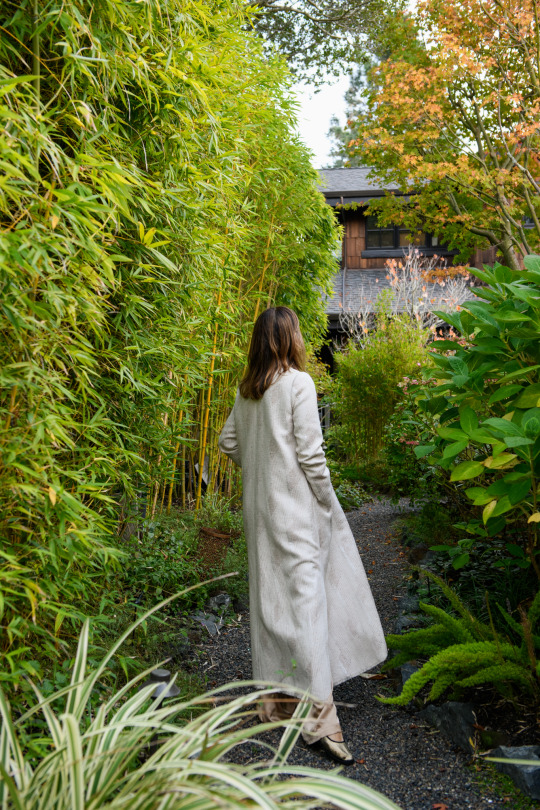

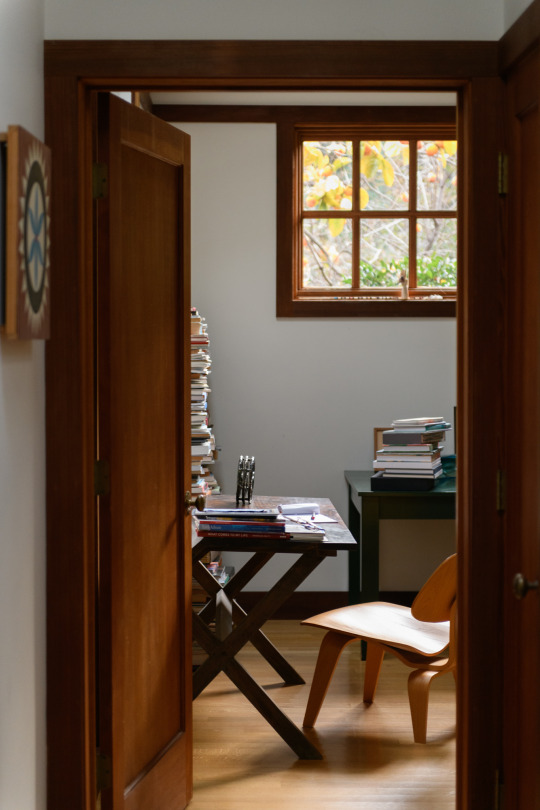
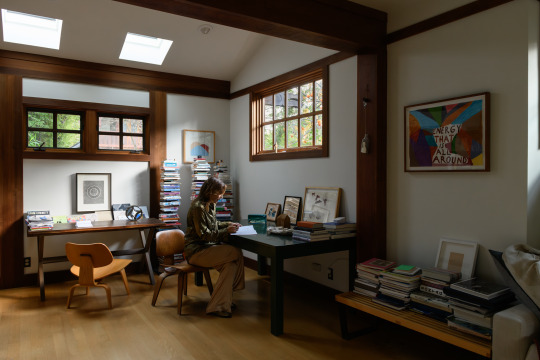

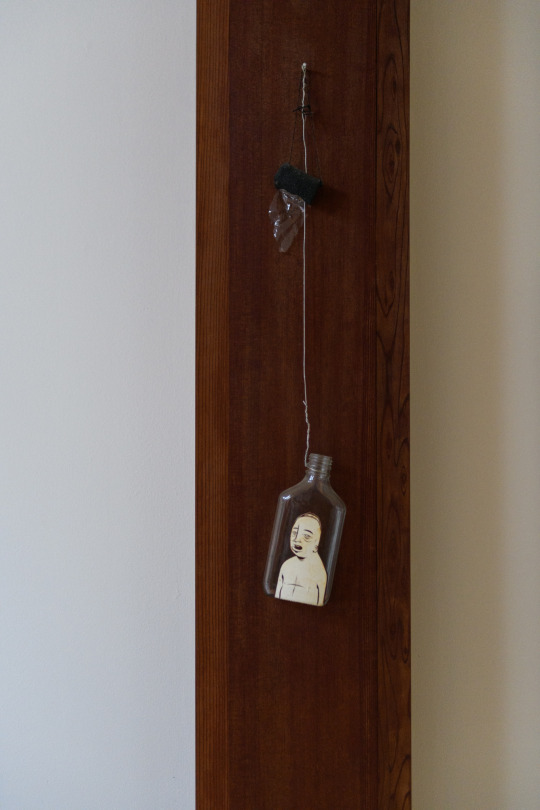
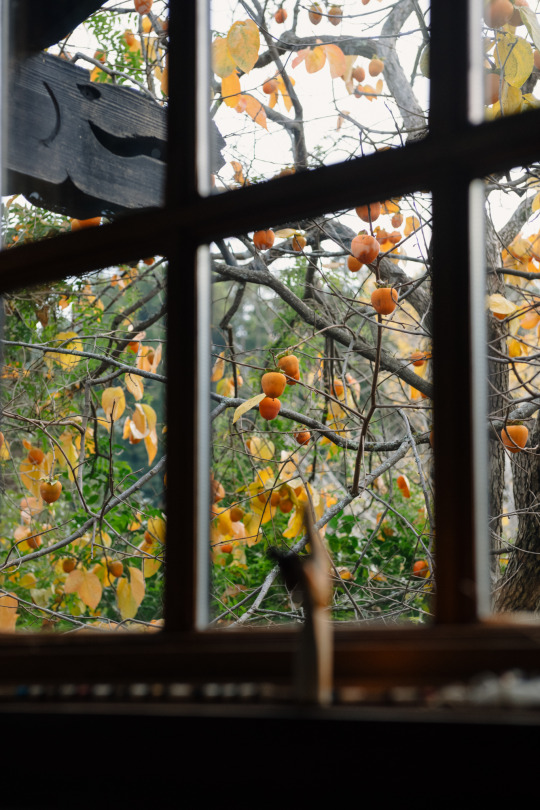



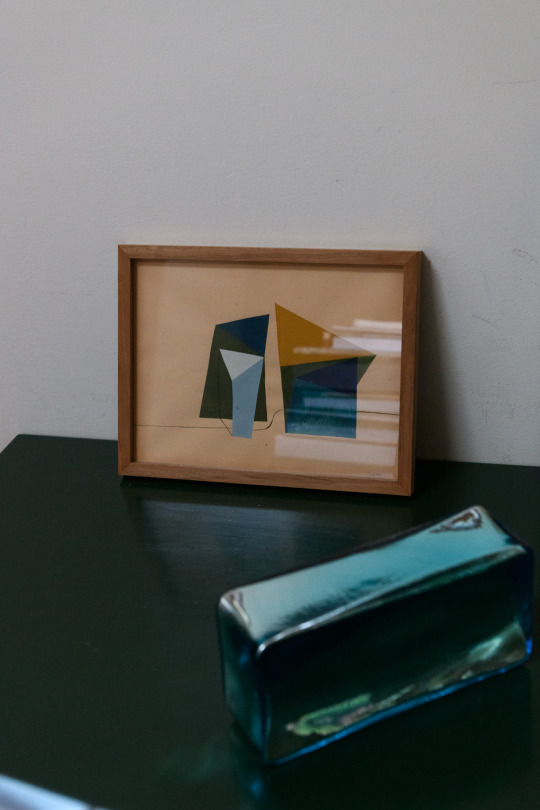
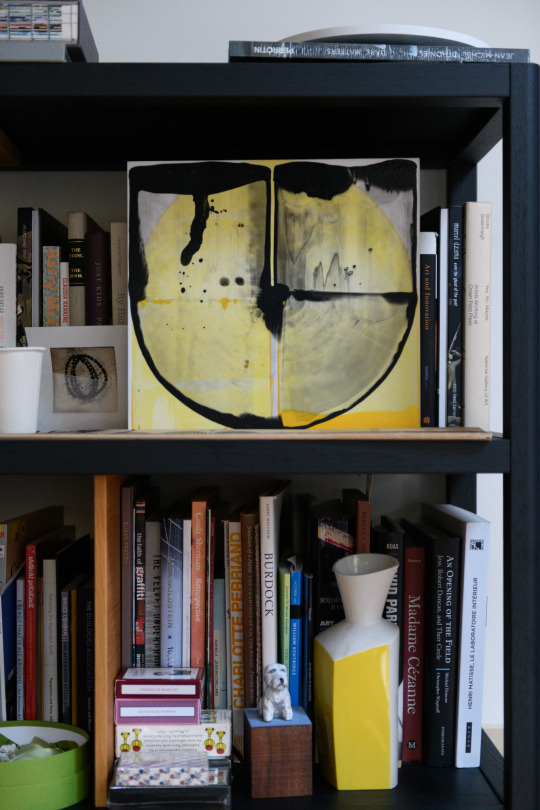
5 notes
·
View notes
Video
undefined
tumblr
New York’s hottest museum is…well, we’re biased. 🤭
In 2023, this cultural hub has everything: contemporary artists reflecting on the complex and continuing legacy of the Great Migration; a landmark exhibition celebrating the creativity, ingenuity, and global impact of contemporary African fashions; a multidecade survey of visually captivating, experimental work by María Magdalena Campos-Pons; and the first major exhibition of zines by artists working in North America, bringing attention to this unexamined but vibrant aesthetic practice.
Not to mention bold, new displays of artwork and objects from our collection.
📷 Allison Janae Hamilton (born Lexington, Kentucky, 1984; based in New York, New York). Still from A House Called Florida, 2022. Three-channel film installation (color, sound): 34 min., 46 sec. Courtesy of the artist and Marianne Boesky Gallery, New York and Aspen → Models holding hands, Lagos, Nigeria, 2019. Courtesy Lagos Fashion Week. (Photo: Stephen Tayo) → María Magdalena Campos-Pons (born Matanzas, Cuba, 1959). Red Composition (detail), from the series Los Caminos (The Path), 1997. Triptych of Polaroid Polacolor Pro photographs, framed. Collection of Wendi Norris. (Photo: courtesy of the artist and Gallery Wendi Norris) → Mark Morrisroe (American, 1959–1989) and Lynelle White. Dirt [Fifth Issue], 1975/76. Xerox. © The Estate of Mark Morrisroe (EMM)
#Brooklyn Museum#brooklyn#museum#New York City#nyc#exhibition#art#photography#film#fashion#AfricaFashionBkM#GreatMigrationBkM#Maria Magdalena Campos Pons#zine#zines#things to do#things to see
13 notes
·
View notes
Text
Gallery Wendi Norris announces Chitra Ganesh: "Tiger in the Looking Glass" - Artdaily
1975 Brooklyn, New York, USA) received a BA in Art-Semiotics and Comparative Literature from Brown University, Providence, RI in 1996. She attended ...
0 notes
Text
Gallery Wendi Norris is honored to present Remedios Varo: Encuentros, the Spanish artist’s second solo gallery exhibition since her death in 1963. With approximately twelve works on display, Remedios Varo: Encuentros explores Varo’s engagement with the unexpected. A decade after organizing the artist’s first solo gallery exhibition (Indelible Fables, 2012), Gallery Wendi Norris is thrilled to…

View On WordPress
0 notes
Text

Miguel Angel Ríos, in collaboration with Rafael Ortega, A Morir ('til Death), (video, 4:53 min; still), 2003, project developed and filmed in Tepoztlán [Capture Photography Festival, Vancouver. © Miguel Angel Ríos.Courtesy of Gallery Wendi Norris, San Francisco, CA]
#art#video#still#play#game#geometry#miguel angel ríos#rafael ortega#capture photography festival#gallery wendi norris#2000s
18 notes
·
View notes
Photo

Ambreen Butt, I am all what is left of me (2nd wall) (2015). Resin casted digits on wood. 120 x 240 inches. 304.8 x 609.6 cm. Courtesy Gallery Wendi Norris.
#ambreen butt#contemporary art#contemporary artist#gallery wendi norris#ocula#ocula art#ocula gallery
14 notes
·
View notes
Text

Leonora Carrington, Mama Aos, 1959, oil on canvas, 23 1/2 x 31 1/2 inches (image courtesy Gallery Wendi Norris) Credit: Scott Saraceno
12 notes
·
View notes
Link
0 notes
Photo

Val Britton - Songlines, 2015
8 notes
·
View notes
Text

Dorothea Tanning, Fatala, 1947.
© Dorothea Tanning Foundation.
Image courtesy of Gallery Wendi Norris, San Francisco.
47 notes
·
View notes